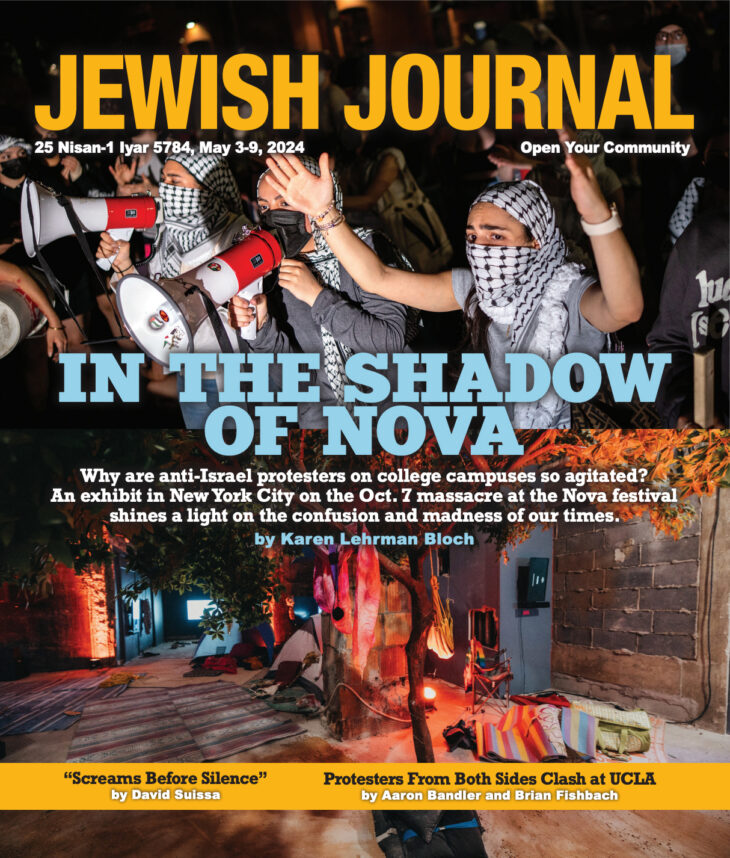Pulling the Tazriah-Metzorah card in the divrei Torah lottery is not considered a lucky draw, but I seem to get it every time. I am repeatedly assigned the task of commenting on this double parashah, which elaborates on skin eruptions, bodily secretions, contact with dead bodies and fungal growths. It establishes a period of confinement for women following childbirth and articulates the prohibitions connected with menses. (Do I hear Julie Andrews singing “My Favorite Things”?)
These parshiyot detail the role of the priest in diagnosing these conditions and facilitating rituals that will release those afflicted from quarantine and return them to participation in the community and its ritual life. The arcane rituals and the yuck factor make translation into our modern context difficult. Yet these words, addressing community participation of vulnerable people, are applicable to our concern with finding God/Holiness at times of illness and vulnerability.
Translation is at the heart of our difficulties with these texts. Common English renditions of some of the parshiyot’s most potent words obscure their profound meanings and relevance to our spiritual concerns. Encountering these words in their own context and then re-contextualizing them for ourselves yields insight into ancient Jewish communal life as well as some of the major existential questions we wrestle with to find a connection between our own struggles and Holiness/God.
Let’s first explore the placement of Tazriah-Metzorah in the Bible. It is found in the middle of the Torah at the heart of Leviticus, the biblical book that addresses the question of how we “draw near” to God.
Leviticus’ focus on the priestly role and the sacrificial rituals offends 21st century sensibilities. However, its specificities reveal the intention of spirituality. Translating the word korbon as “sacrifice” describes concisely the ancient world’s technology for “drawing near” (a more accurate translation) to God. Within that world, that translation makes sense. This process involved bringing something precious (maybe a lamb raised or fruits grown and harvested), giving it to the priest as a sacrifice and watching it go up in smoke from an altar. This process transmuted the sacrificed physical object to something ethereal. It became smoke, rising to connect with a God above. The priests then ate other bits of the sacrifice as part of a communal meal. Think of it as a potluck barbecue to which everyone but the rabbis and their staff bring their most prized dish. The evening’s menu is organized around the theme: What can I bring to the community that will align me with Holiness? Such a question is certainly relevant to our roles in our communities today.
The second context: the world of ancient medicine. The sources of illness were mysterious. It was speculated that sin caused disease. Specifically, improper use of language was believed to cause leprosy. Imagine a world with no understanding of germs or scientific remedies. Childbirth and infancy were likely to be fatal. The priests, the ancient medical professionals, determined who was fit to participate in Temple rituals. The key word here is tamai, usually translated as “impure,” which describes the profound experience of those standing at the uneasy juncture between life and death, a liminal time when one might feel abandoned by God. “Drawing near” may feel impossible. Tamai more appropriately means unable to participate in ritual activities due to a sense of alienation from The Holy. How does one with a challenged body or a tzerbrochene neshome (shattered soul) get past these to once more take part in communal life? Call the rabbi.
The final context for examining Tazriah-Metzorah is the time that we read it: the beginning of the month of Iyar, the only full month during the time of counting the Omer. Just as in Iyar, when we purify ourselves to prepare for Shavuot, Tazriah-Metzorah is concerned with purification in times of profound experiences — such as illness, childbirth or grief — to prepare people to re-enter the sacred precinct. Purification, taharah, is not about cleansing from impurity; it is rather about realigning with the sacred. It might be compared to the Chasidic concept of bitul hayesh (selflessness), in which we are cleansed of ego and distraction in order to be present to our roles in the holy community.
These parshiyot are concerned with the purification/realignment (taharah) needed for those whose challenges have set them aside from the community (tamai) so they can again find proximity to God (korbon). They address our need to find a way to “draw near” to God when we are suffering and afraid. Tazriah-Metzorah reminds us, in the words of Chasidic commentator Sefat Emet, “God’s divinity is not to be found only in closeness, but even the distancing God does ultimately brings us near” (3:141).
Tazriah-Metzorah is far from an unlucky draw. It provides a window into the Holy of Holies, revealing not only ancient understandings of the priesthood, illness and healing, but also a primary spiritual concern: How do we, even when we are broken, find a way to be close to Holiness?
Anne Brener is an L.A.-based psychotherapist and spiritual counselor. She is the author of “Mourning & Mitzvah: Walking the Mourner’s Path” (Jewish Lights, 1993 and 2001) and she teaches at the Academy for Jewish Religion, California. Rabbi Brener is a member of Temple Israel of Hollywood and can be reached at {encode=”mekamot@aol.com” title=”mekamot@aol.com”}.





















 More news and opinions than at a Shabbat dinner, right in your inbox.
More news and opinions than at a Shabbat dinner, right in your inbox.